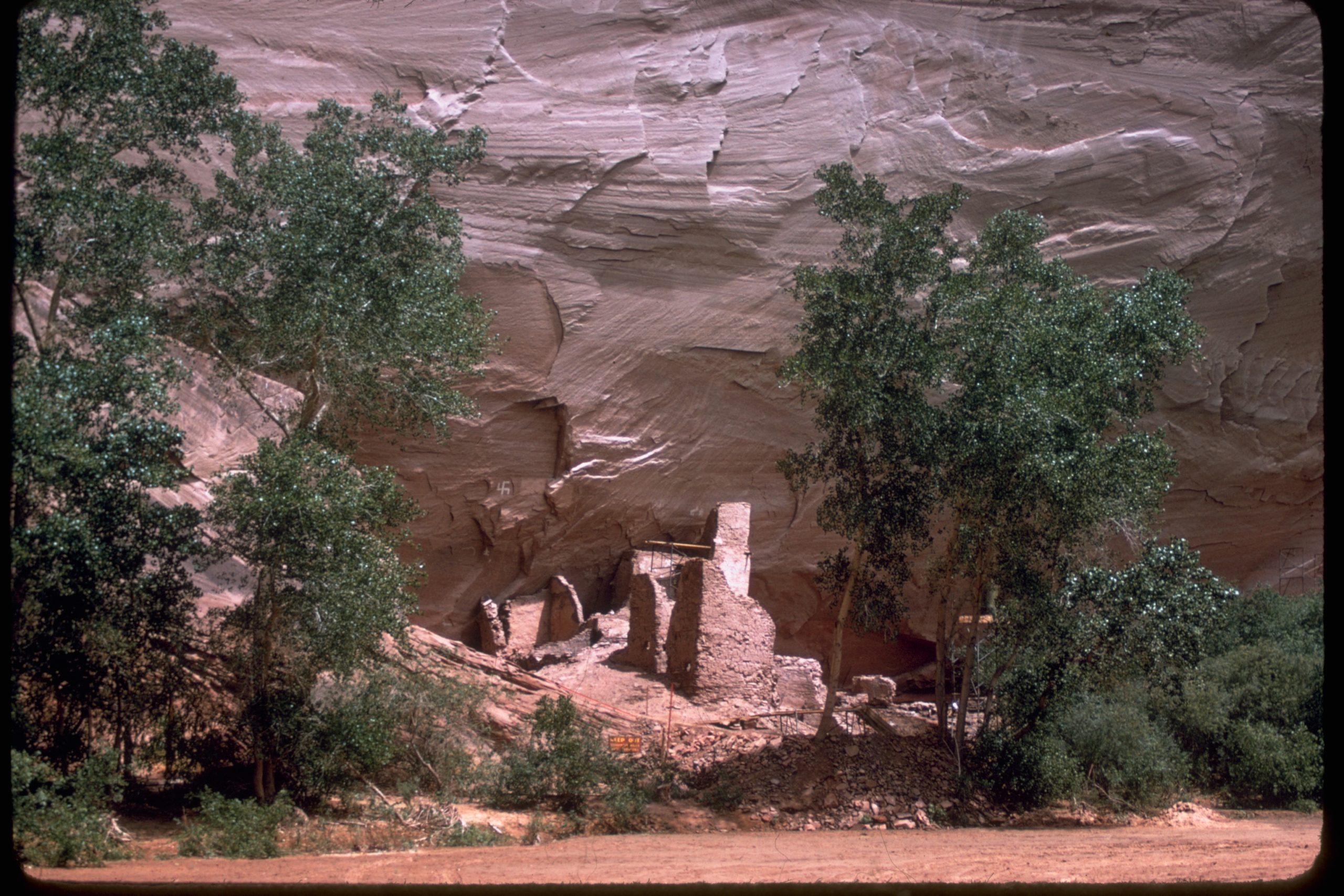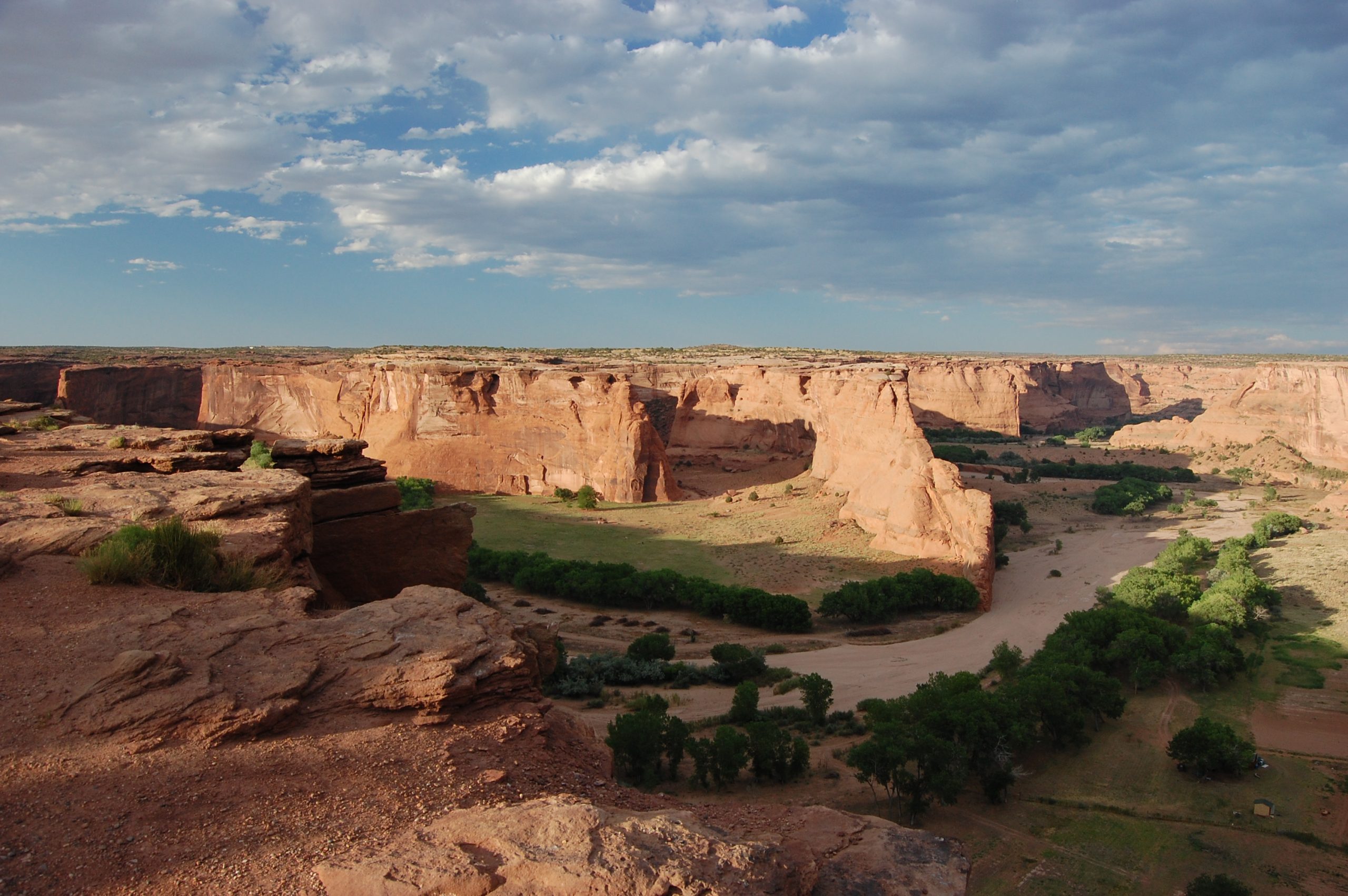Canyon de Chelly National Monument: A Historical Overview
Canyon de Chelly National Monument, established on April 1, 1931, is a significant cultural and historical site located in northeastern Arizona, within the Navajo Nation. This monument, covering 83,840 acres, is unique as it is entirely owned by the Navajo Tribal Trust, making it the only National Park Service unit owned and cooperatively managed in this manner. The monument’s landscape has been continuously inhabited for thousands of years, showcasing the rich history of the indigenous tribes that have lived in the area.
Get your dose of History via Email
Etymology of Canyon de Chelly
The name “Chelly” is derived from the Navajo word “Tséyiʼ” (or “Tsegi”), meaning “rock canyon.” This term reflects the monument’s geographical features, with its deep canyons carved by streams originating from the Chuska Mountains. The English pronunciation, /dəˈʃeɪ/ də-SHAY, has evolved from the original Spanish adaptation of the Navajo term.

Historical Significance
Canyon de Chelly has a tumultuous history, particularly during the 19th century. In 1805, the canyon was the site of a significant conflict when Lt. Antonio Narbona led a Spanish expedition against the Navajo, resulting in a substantial loss of life. Later, in 1863, Col. Kit Carson’s forces entered the canyon, destroying Navajo resources and leading to the surrender and forced removal of the Navajo people to Bosque Redondo, New Mexico. These events were pivotal in the history of the Navajo Nation and the American Southwest.
Description and Access
Despite its historical upheavals, approximately 40 Navajo families continue to live within the park. Access to the canyon floor is restricted to protect both the archaeological integrity of the site and the privacy of the Navajo residents. Visitors can explore the canyons only when accompanied by a park ranger or an authorized Navajo guide, with the exception of the White House Ruin Trail, which is currently closed.
Spider Rock and Other Features
A notable geological feature within the monument is Spider Rock, a 750-foot sandstone spire that towers above the canyon floor. This feature, along with the ancient ruins and geological structures, attracts numerous visitors each year. The monument offers spectacular views from both the North Rim Drive and South Rim Drive, allowing visitors to appreciate the beauty and historical significance of the area from a distance.

Indian History and Archaeology
The canyons house several hundred prehistoric Indian villages, with evidence of habitation dating from A.D. 350 to 1300. The earliest inhabitants, known as “Basketmakers” for their intricate basketry, later evolved into the Pueblo people, constructing elaborate stone masonry villages. The region experienced a significant population decline around 1300 due to a prolonged drought, leading to the eventual abandonment of these settlements. The Navajo people began occupying the canyons around 1700, marking a new chapter in the area’s history.
Preservation and Respect
Canyon de Chelly National Monument is not only a site of natural beauty but also a place of deep historical and cultural significance. Visitors are encouraged to respect the land and its people by adhering to guidelines that protect the archaeological sites and respect the privacy of the Navajo residents. The monument serves as a reminder of the rich and complex history of the indigenous peoples of North America and their enduring presence in the landscape.
In conclusion, Canyon de Chelly National Monument offers a unique glimpse into the ancient and recent history of the American Southwest. Its preservation as a national monument allows for the continued appreciation and study of the cultures that have shaped this remarkable landscape.
Sources:
Wikipedia
National Park Service

